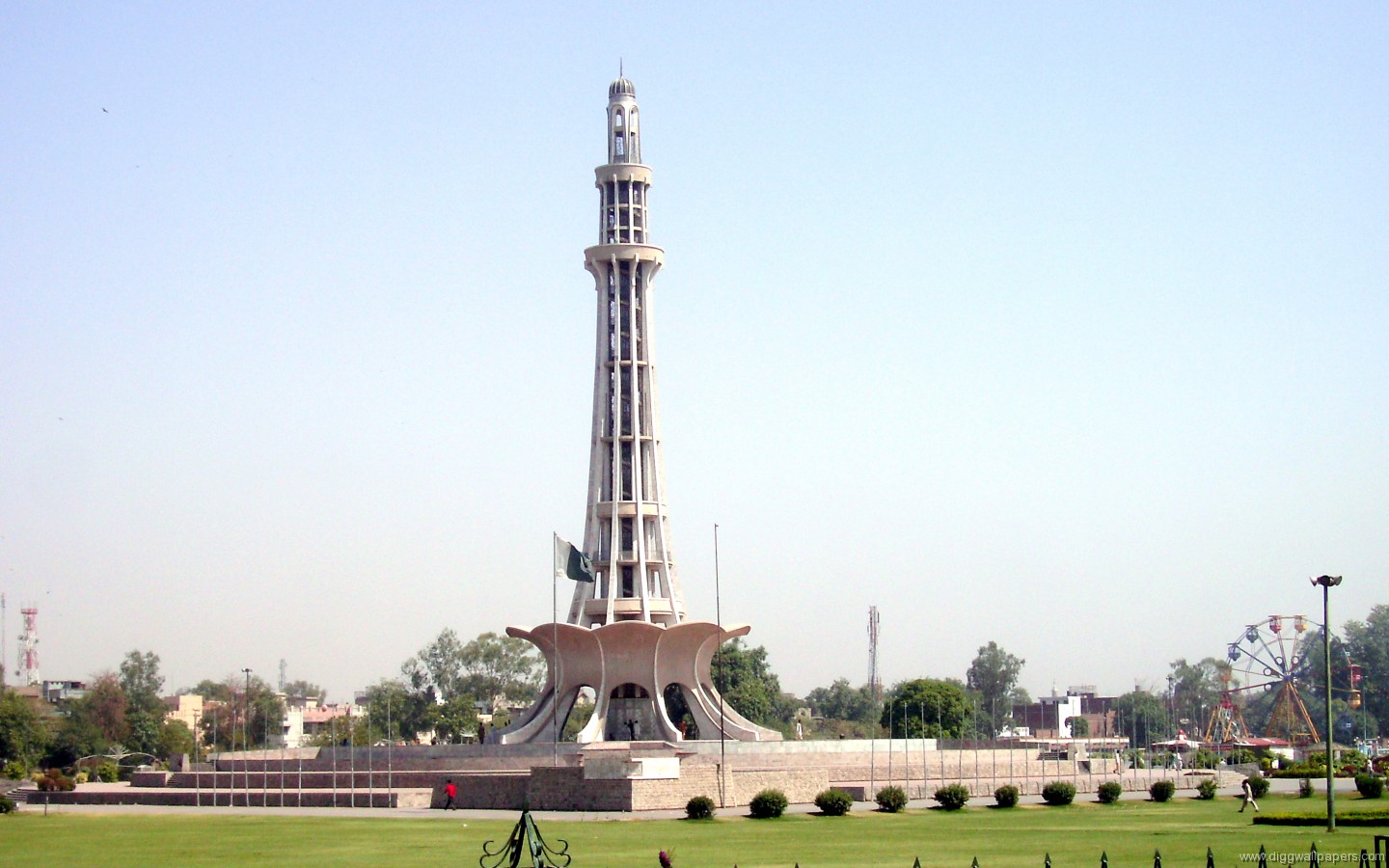Minar-e-Pakistan (literally "Tower of Pakistan") is a public monument located in Iqbal Park, which is one of the largest urban parks in Lahore, Punjab, Pakistan. The tower was constructed during the 1960s on the site where, on 23 March 1940, the All-India Muslim League passed the Lahore Resolution, the first official call for a separate homeland for Muslims living in South Asia, in accordance with the two-nation theory.
The tower reflects a blend of Mughal, Islamic and modern architecture. The tower was designed and supervised by Nasreddin Murat-Khan, an architect and engineer hailing from Daghistan, assisted by Engineer Abdur Rehman Khan Niazi who was working as Structural Design Engineer for Illeri N. Murat-Khan & Associates. Approved by the President, the design was built by Mian Abdul Khaliq and Company. The foundation stone was laid on 23 March 1960. The construction took eight years, and was completed on 31 October 1968 at an estimated cost of Rs 7,058,000. The money was collected by imposing an additional tax on cinema and horse racing tickets on the demand of Akhtar Hussain, governor of West Pakistan. Today, the minaret provides a panoramic view to visitors who can climb up the stairs or through an elevator. The parks around the monument include marble fountains and an artificial lake.
Structure
The base is about 8 meters above the ground. The tower rises about 62 meters at its base. Thus the total height of the minaret is about 70 meters above the ground. The unfolding petals of the flower-like base are 9 meters high. The diameter of the tower is about 9.75 meters. The rostrum is built of patterned tiles, and faces the Badshahi Mosque. The base comprises four platforms. To symbolize the humble beginnings of the freedom struggle, the first platform was built with uncut Taxila stones. The second platform is made of hammer-dressed stones, whereas the third platform is of chiselled stones. Polished white marble at the fourth and final platform depicts the success of the Pakistan Movement. Mr. Mukhtar Masood, a prolific writer and the then–deputy commissioner of Lahore, was one of the members of the Building Committee.
Inscriptions
At the base, there are floral inscriptions on ten converging white marble Commemorative plaques. The inscriptions include the text of Lahore Resolution in Urdu, Bengali and English, and Delhi Resolution's text, which was passed on 9 April 1946. On different plaques, Quranic verses and 99 attributes of Allah are inscribed in Arabic calligraphy, whereas National Anthem of Pakistan in Urdu and Bengali, excerpts from the speeches of Muhammad Ali Jinnah, in Urdu, Bengali and English, as well as few couplets of Allama Iqbal are inscribed.
How to Travel to Minar-e-Pakistan?
There are a number of ways to reach Minar-e-Pakistan. The easiest way is to take a bike or car. However, public transport is also available. Buses run regularly from Lahore's main bus station, and there are also a number of rickshaws that ply the route. The journey takes around 30 minutes by bike or car, and around 45 minutes by bus or rickshaw. Whichever way you choose to travel, Minar-e-Pakistan is sure to be a memorable experience.
What is the Good time to visit Minar-e-Pakistan?
The best time to visit Minar-e-Pakistan is anytime except summer. Summer can be quite hot and humid, making it uncomfortable to be outdoors for extended periods of time. However, the cooler months of spring and fall are ideal for exploring the monument and its surrounding park. The weather is pleasant, and there are often special events taking place at the site. Whether you’re interested in history or simply looking for a beautiful place to spend a day, Minar-e-Pakistan is worth a visit anytime except summer.

